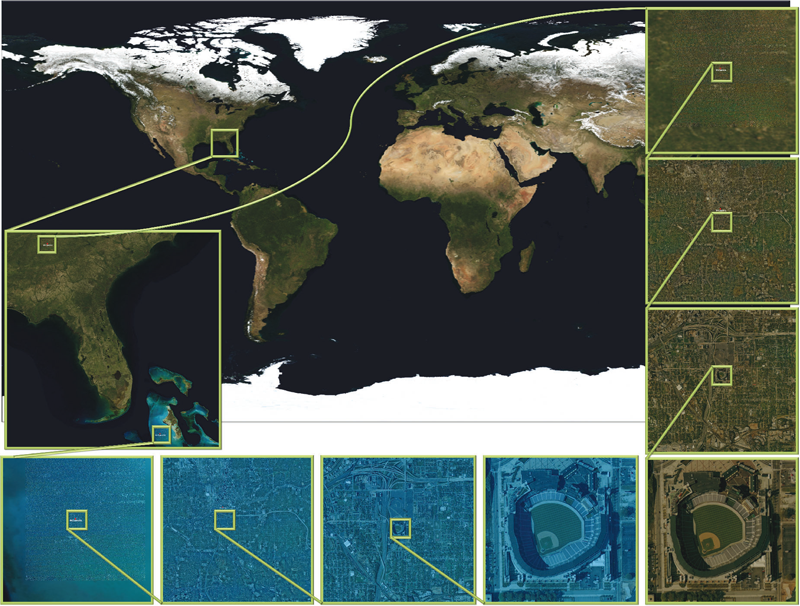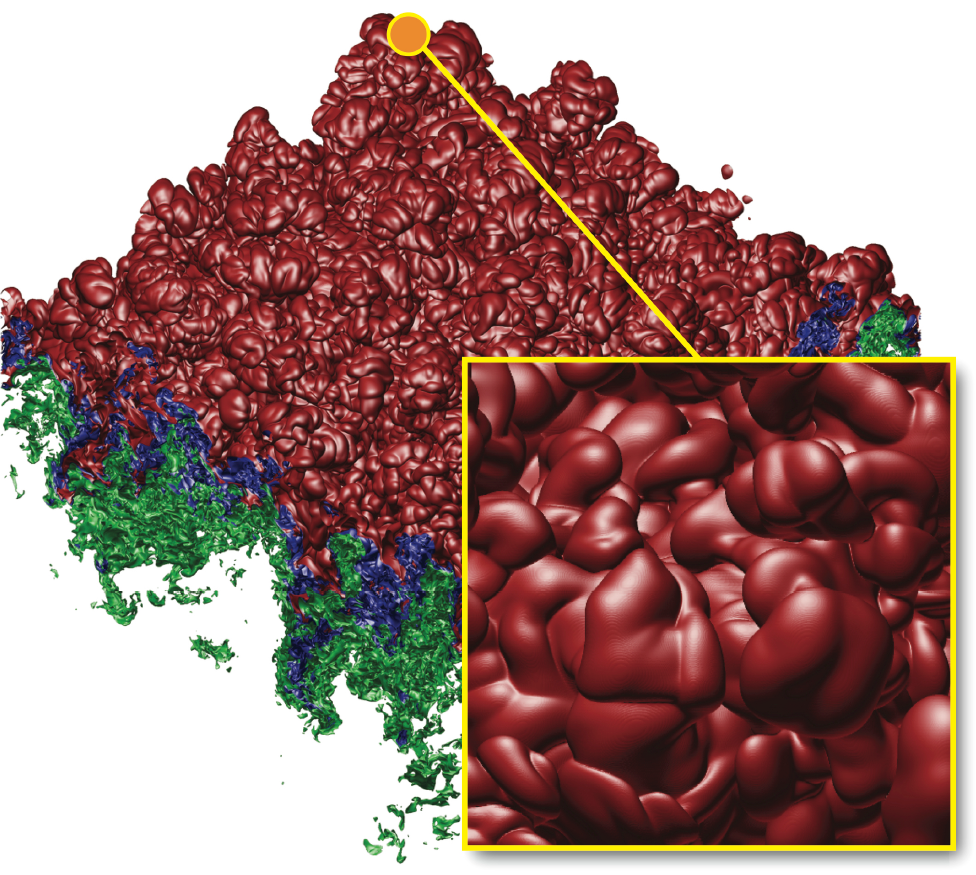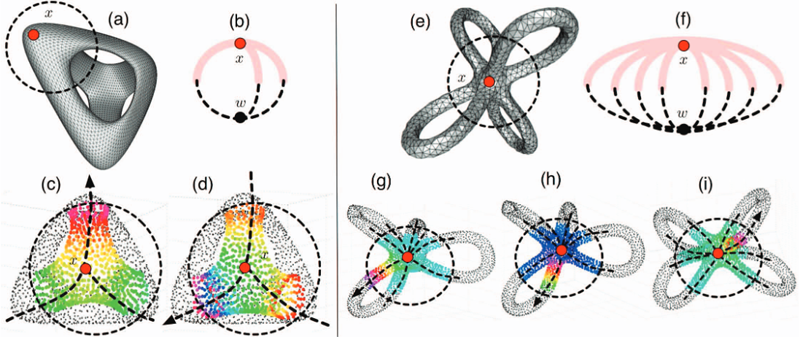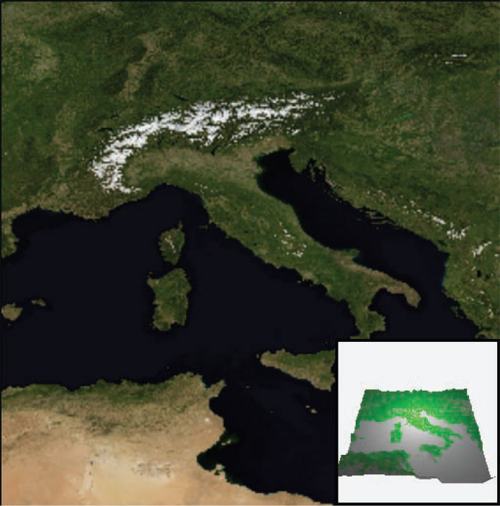SCI Publications
2011
S. Philip, B. Summa, P-T Bremer, V. Pascucci.
“Hybrid CPU-GPU Solver for Gradient Domain Processing of Massive Images,” In Proceedings of 2011 International Conference on Parallel and Distributed Systems (ICPADS), pp. 244--251. 2011.

M. Schulz, J.A. Levine, P.-T. Bremer, T. Gamblin, V. Pascucci.
“Interpreting Performance Data Across Intuitive Domains,” In International Conference on Parallel Processing, Taipei, Taiwan, IEEE, pp. 206--215. 2011.
DOI: 10.1109/ICPP.2011.60
B. Summa, G. Scorzelli, M. Jiang, P.-T. Bremer, V. Pascucci.
“Interactive Editing of Massive Imagery Made Simple: Turning Atlanta into Atlantis,” In ACM Transactions on Graphics, Vol. 30, No. 2, pp. 7:1--7:13. April, 2011.
DOI: 10.1145/1944846.1944847

This article presents a simple framework for progressive processing of high-resolution images with minimal resources. We demonstrate this framework's effectiveness by implementing an adaptive, multi-resolution solver for gradient-based image processing that, for the first time, is capable of handling gigapixel imagery in real time. With our system, artists can use commodity hardware to interactively edit massive imagery and apply complex operators, such as seamless cloning, panorama stitching, and tone mapping.
We introduce a progressive Poisson solver that processes images in a purely coarse-to-fine manner, providing near instantaneous global approximations for interactive display (see Figure 1). We also allow for data-driven adaptive refinements to locally emulate the effects of a global solution. These techniques, combined with a fast, cache-friendly data access mechanism, allow the user to interactively explore and edit massive imagery, with the illusion of having a full solution at hand. In particular, we demonstrate the interactive modification of gigapixel panoramas that previously required extensive offline processing. Even with massive satellite images surpassing a hundred gigapixels in size, we enable repeated interactive editing in a dynamically changing environment. Images at these scales are significantly beyond the purview of previous methods yet are processed interactively using our techniques. Finally our system provides a robust and scalable out-of-core solver that consistently offers high-quality solutions while maintaining strict control over system resources.
D. Thompson, J.A. Levine, J.C. Bennett, P.-T. Bremer, A. Gyulassy, V. Pascucci, P.P. Pebay.
“Analysis of Large-Scale Scalar Data Using Hixels,” In Proceedings of the 2011 IEEE Symposium on Large-Scale Data Analysis and Visualization (LDAV), Providence, RI, pp. 23--30. 2011.
DOI: 10.1109/LDAV.2011.6092313
H.T. Vo, J. Bronson, B. Summa, J.L.D. Comba, J. Freire, B. Howe, V. Pascucci, C.T. Silva.
“Parallel Visualization on Large Clusters using MapReduce,” SCI Technical Report, No. UUSCI-2011-002, SCI Institute, University of Utah, 2011.
H.T. Vo, J. Bronson, B. Summa, J.L.D. Comba, J. Freire, B. Howe, V. Pascucci, C.T. Silva.
“Parallel Visualization on Large Clusters using MapReduce,” In Proceedings of the 2011 IEEE Symposium on Large-Scale Data Analysis and Visualization (LDAV), pp. 81--88. 2011.

Keywords: MapReduce, Hadoop, cloud computing, large meshes, volume rendering, gigapixels
H.T. Vo, C.T. Silva, L.F. Scheidegger, V. Pascucci.
“Simple and Efficient Mesh Layout with Space-Filling Curves,” In Journal of Graphics, GPU, and Game Tools, pp. 25--39. 2011.
ISSN: 2151-237X
Bei Wang, B. Summa, V. Pascucci, M. Vejdemo-Johansson.
“Branching and Circular Features in High Dimensional Data,” SCI Technical Report, No. UUSCI-2011-005, SCI Institute, University of Utah, 2011.
Bei Wang, B. Summa, V. Pascucci, M. Vejdemo-Johansson.
“Branching and Circular Features in High Dimensional Data,” In IEEE Transactions of Visualization and Computer Graphics (TVCG), Vol. 17, No. 12, pp. 1902--1911. 2011.
DOI: 10.1109/TVCG.2011.177
PubMed ID: 22034307

Keywords: Dimensionality reduction, circular coordinates, visualization, topological analysis
S. Williams, M. Petersen, P.-T. Bremer, M. Hecht, V. Pascucci, J. Ahrens, M. Hlawitschka, B. Hamann.
“Adaptive Extraction and Quantification of Geophysical Vortices,” In IEEE Transactions on Visualization and Computer Graphics, Proceedings of the 2011 IEEE Visualization Conference, Vol. 17, No. 12, pp. 2088--2095. 2011.
2010
M. Berger, L.G. Nonato, V. Pascucci, C.T. Silva.
“Fiedler Trees for Multiscale Surface Analysis,” In Computer & Graphics, Vol. 34, No. 3, Note: Special Issue of Sha, pp. 272--281. June, 2010.
DOI: 10.1016/j.cag.2010.03.009
In this work we introduce a new hierarchical surface decomposition method for multiscale analysis of surface meshes. In contrast to other multiresolution methods, our approach relies on spectral properties of the surface to build a binary hierarchical decomposition. Namely, we utilize the first nontrivial eigenfunction of the Laplace–Beltrami operator to recursively decompose the surface. For this reason we coin our surface decomposition the Fiedler tree. Using the Fiedler tree ensures a number of attractive properties, including: mesh-independent decomposition, well-formed and nearly equi-areal surface patches, and noise robustness. We show how the evenly distributed patches can be exploited for generating multiresolution high quality uniform meshes. Additionally, our decomposition permits a natural means for carrying out wavelet methods, resulting in an intuitive method for producing feature-sensitive meshes at multiple scales.
T. Etiene, L.G. Nonato, C.E. Scheidegger, J. Tierny, T.J. Peters, V. Pascucci, R.M. Kirby, C.T. Silva.
“Topology Verification for Isosurface Extraction,” SCI Technical Report, No. UUSCI-2010-003, SCI Institute, University of Utah, 2010.
S. Gerber, P.-T. Bremer, V. Pascucci, R.T. Whitaker.
“Visual Exploration of High Dimensional Scalar Functions,” In IEEE Transactions on Visualization and Computer Graphics, IEEE Transactions on Visualization and Computer Graphics, Vol. 16, No. 6, IEEE, pp. 1271--1280. Nov, 2010.
DOI: 10.1109/TVCG.2010.213
PubMed ID: 20975167
PubMed Central ID: PMC3099238
S. Jadhav, H. Bhatia, P.-T. Bremer, J.A. Levine, L.G. Nonato, V. Pascucci.
“Consistent Approximation of Local Flow Behavior for 2D Vector Fields using Edge Maps,” SCI Technical Report, No. UUSCI-2010-004, SCI Institute, University of Utah, 2010.
S. Kumar, V. Vishwanath, P. Carns, V. Pascucci, R. Latham, T. Peterka, M. Papka, R. Ross.
“Towards Efficient Access of Multi-dimensional, Multi-resolution Scientific Data,” In Proceedings of the 5th Petascale Data Storage Workshop, Supercomputing 2010, pp. (in press). 2010.
J. Tierny, J. Daniels II, L.G. Nonato, V. Pascucci, C.T. Silva.
“Interactive Quadrangulation with Reeb Atlases and Connectivity Textures,” SCI Technical Report, No. UUSCI-2010-006, SCI Institute, University of Utah, 2010.
H.T. Vo, D.K. Osmari, B. Summa, J.L.D. Comba, V. Pascucci, C.T. Silva.
“Streaming-Enabled Parallel Dataflow Architecture for Multicore Systems,” In Computer Graphics Forum, Vol. 29, No. 3, pp. 1073--1082. 2010.
H.T. Vo, D.K. Osmari, B. Summa, J.L.D. Comba, V. Pascucci, C.T. Silva.
“Streaming-Enabled Parallel Dataflow Architecture for Multicore Systems,” In Computer Graphics Forum, Vol. 29, No. 3, Wiley-Blackwell, pp. 1073--1082. Aug, 2010.
DOI: 10.1111/j.1467-8659.2009.01704.x

2009
E.W. Bethel, C.R. Johnson, S. Ahern, J. Bell, P.-T. Bremer, H. Childs, E. Cormier-Michel, M. Day, E. Deines, P.T. Fogal, C. Garth, C.G.R. Geddes, H. Hagen, B. Hamann, C.D. Hansen, J. Jacobsen, K.I. Joy, J. Krüger, J. Meredith, P. Messmer, G. Ostrouchov, V. Pascucci, K. Potter, Prabhat, D. Pugmire, O. Rubel, A.R. Sanderson, C.T. Silva, D. Ushizima, G.H. Weber, B. Whitlock, K. Wu.
“Occam's Razor and Petascale Visual Data Analysis,” In Journal of Physics: Conference Series, Journal of Physics: Conference Series, Vol. 180, No. 012084, pp. (published online). 2009.
DOI: 10.1088/1742-6596/180/1/012084
One of the central challenges facing visualization research is how to effectively enable knowledge discovery. An effective approach will likely combine application architectures that are capable of running on today's largest platforms to address the challenges posed by large data with visual data analysis techniques that help find, represent, and effectively convey scientifically interesting features and phenomena.
C.D. Hansen, C.R. Johnson, V. Pascucci, C.T. Silva.
“Visualization for Data-Intensive Science,” In The Fourth Paradigm: Data-Intensive Science, Edited by S. Tansley and T. Hey and K. Tolle, Microsoft Research, pp. 153--164. 2009.
Page 7 of 13
